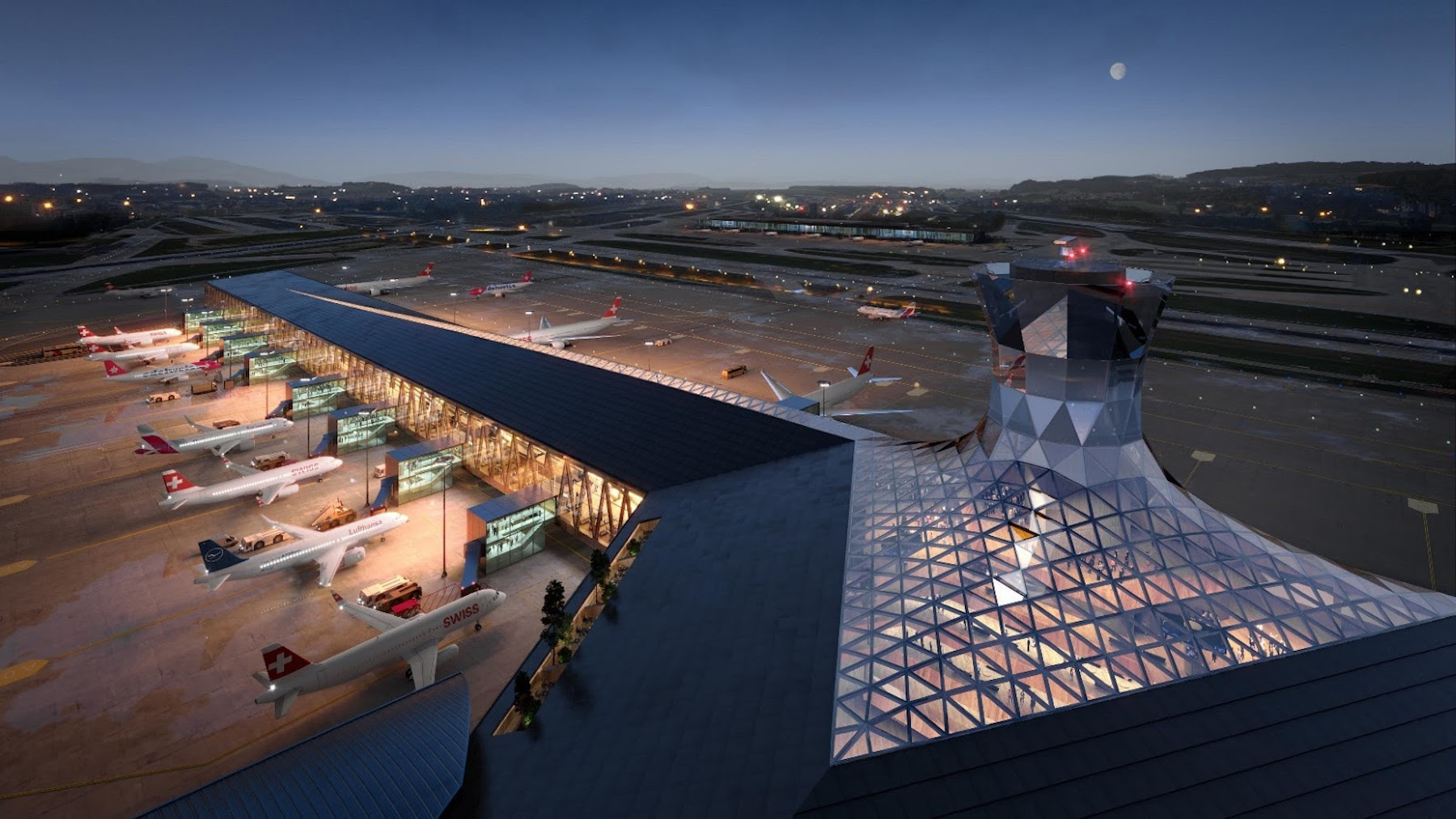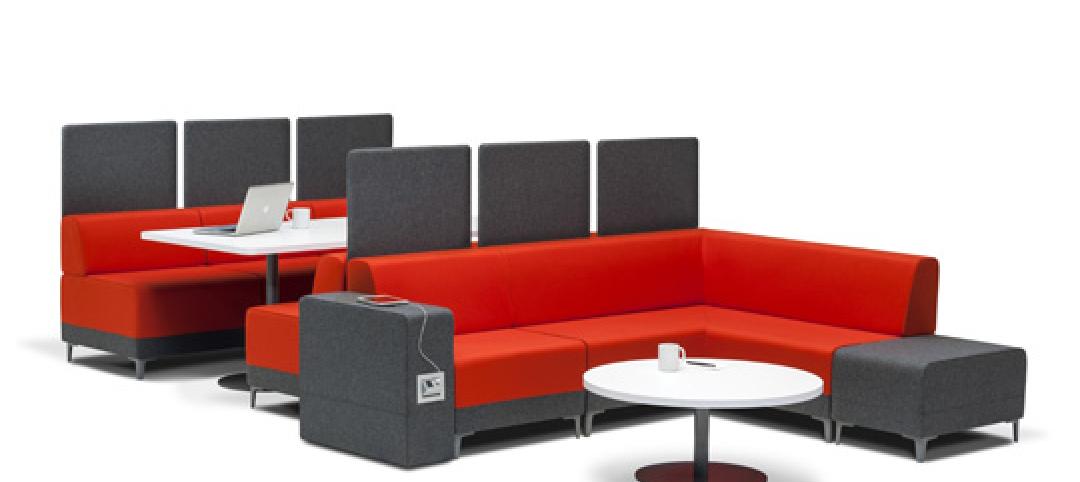Two years ago, Zurich Airport, which opened in the 1950s, launched an international design competition to replace the aging Dock A—the airport’s largest dock. The winning design is led by BIG, with HOK as the aviation architect. The new Dock A—including gates, retail, lounges, offices, a new air traffic control tower, and an extension of the immigration hall—is slated to open by 2032.
The seven-floor Dock A will have two main areas: a central hub with shopping, airport services for arriving and departing passengers, and vertical circulation; and a pier with the gates, waiting areas, and fixed links connecting to the planes. The control tower will be placed in the building’s center.
Dock A’s structure, floors, and ceilings will be made primarily with mass timber. A renewable local resource, this material will allow for prefabrication during the construction process—while also nodding to the Swiss tradition of wood construction. The building’s V-shaped timber columns not only provide structural support but also reference Switzerland’s iconic mountains and pitched roofs.
“As airports grow and evolve and as international guidelines and safety requirements change, airports tend to become more and more complex: Frankensteins of interconnected elements, patches and extensions,” Bjarke Ingels, founder and creative director, BIG, said in a statement. “For the new main terminal of Zurich Airport, we have attempted to answer this complex challenge with the simplest possible response: a mass timber space frame that is structural design, spatial experience, architectural finish, and organizational principle in one.”
The long, sculptural roof will be covered with PV panels. Integrated shading will reduce solar heat gain and maintenance requirements. And the building will use a combination of water and air-based cooling and heating systems.
The “simple yet expressive design,” Ingels added, embodies “the cultural and natural elements of Swiss architecture.”
On the building team:
Owner: Zurich Airport
Design lead: BIG
Aviation architect: HOK
Local architect: 10:8
Structural engineer: Buro Happold
Structural engineer timber/building physics: Pirmin Jung Schweiz AG
Mechanical engineer: Haerter & Partner AG
Electrical engineer: TLP
Construction management: Baurealisation
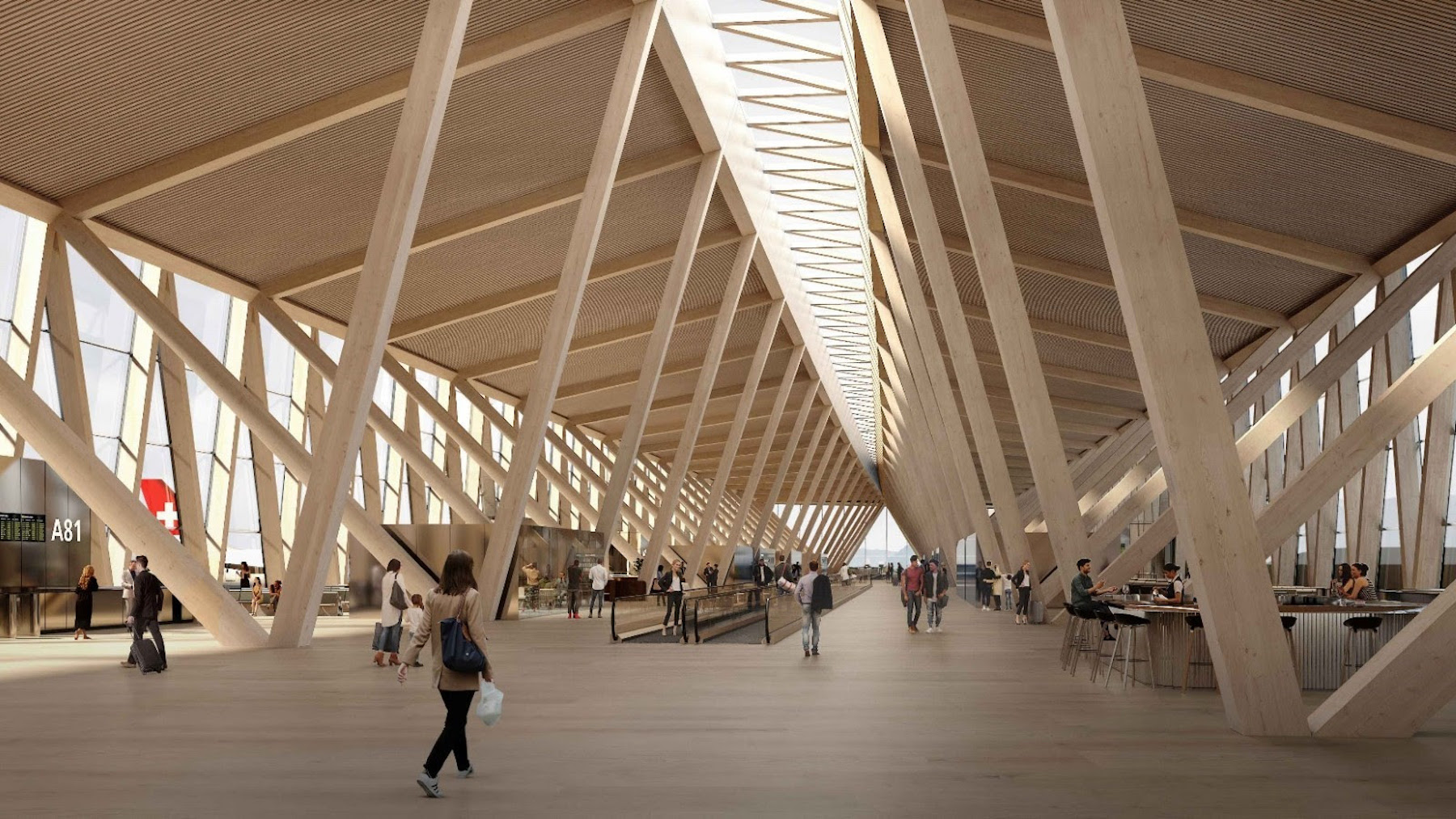
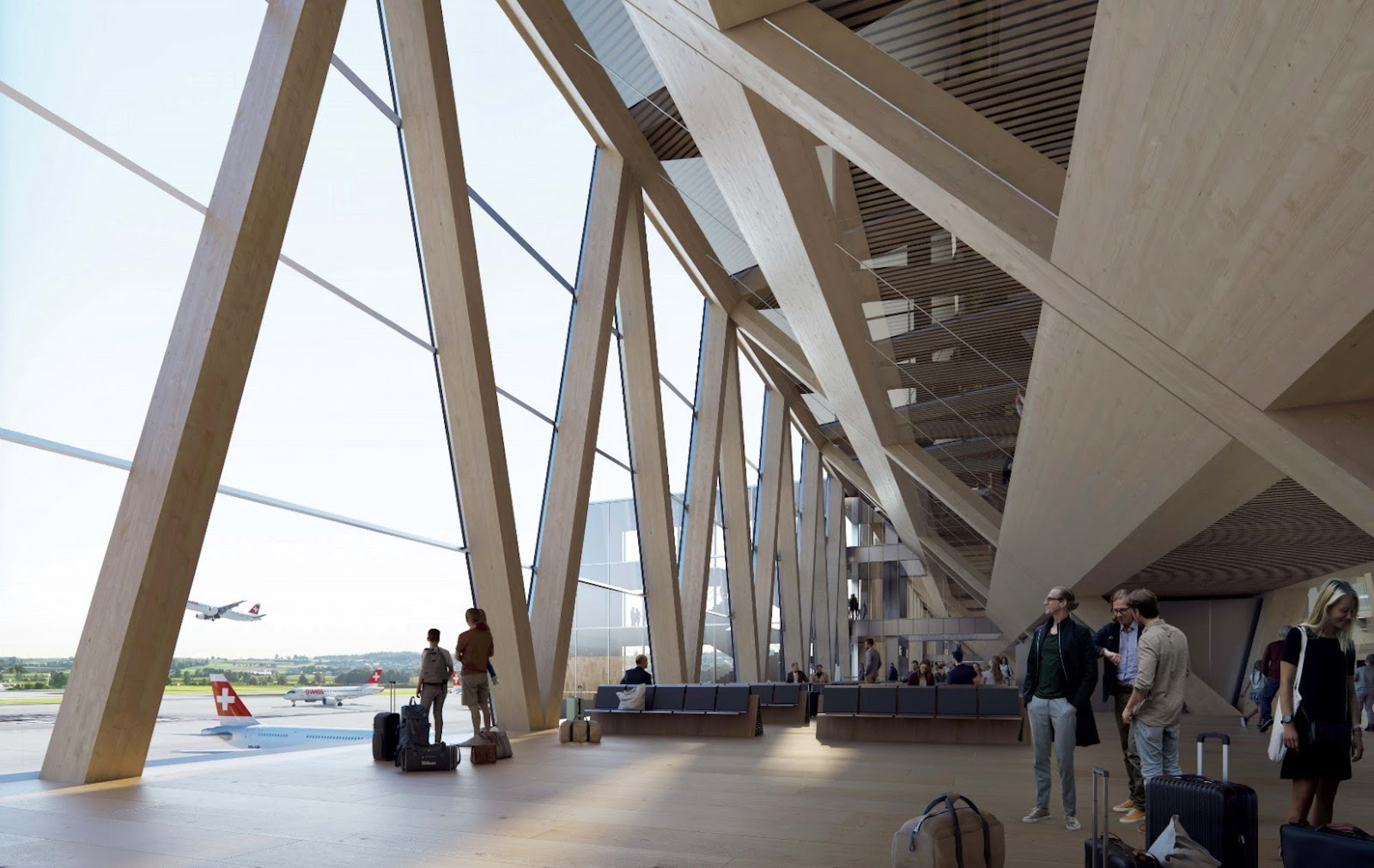
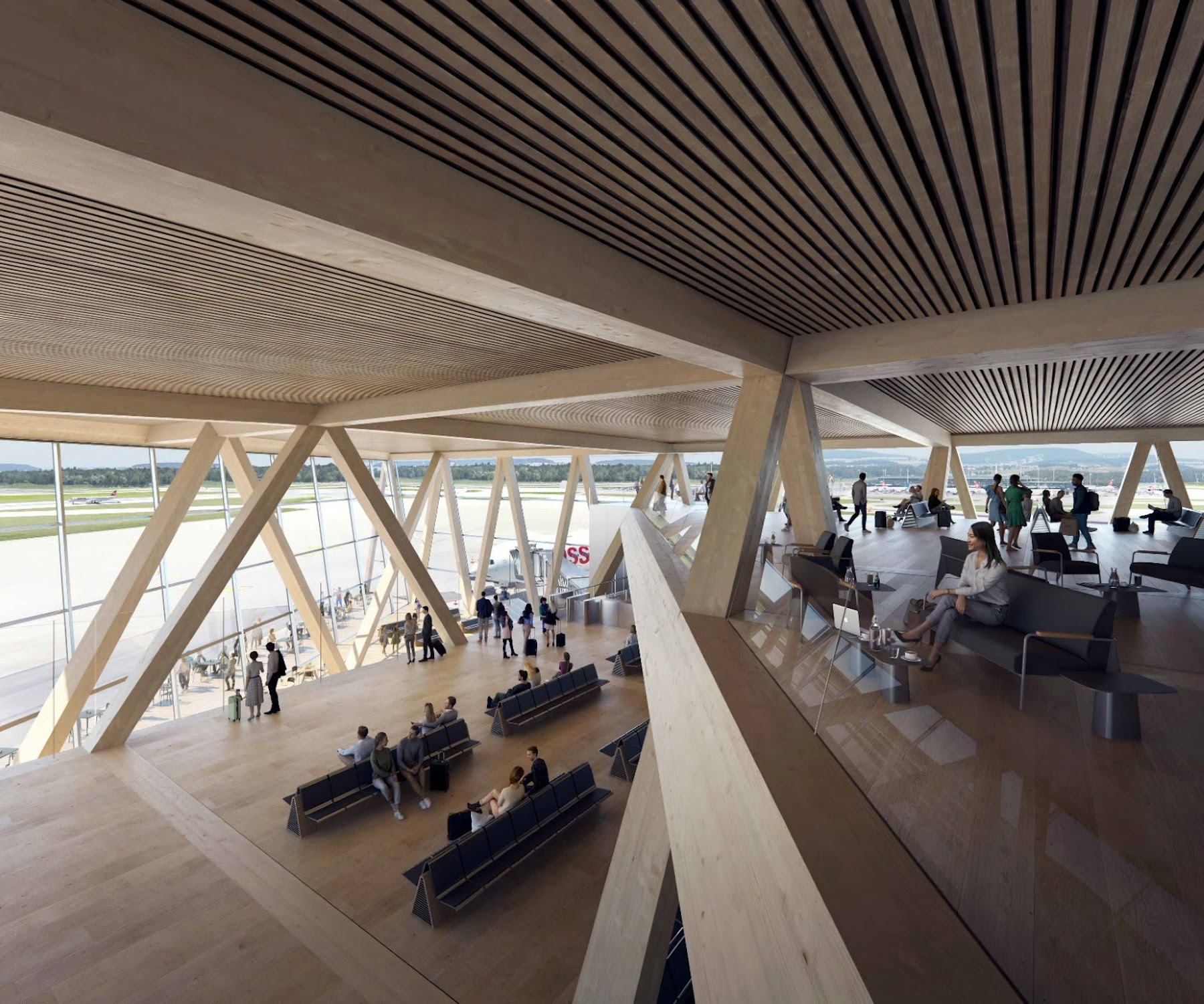
Related Stories
| Jul 2, 2014
Emerging trends in commercial flooring
Rectangular tiles, digital graphic applications, the resurgence of terrazzo, and product transparency headline today’s commercial flooring trends.
| Jun 30, 2014
Arup's vision of the future of rail: driverless trains, maintenance drones, and automatic freight delivery
In its Future of Rail 2050 report, Arup reveals a vision of the future of rail travel in light of trends such as urban population growth, climate change, and emerging technologies.
| Jun 18, 2014
Arup uses 3D printing to fabricate one-of-a-kind structural steel components
The firm's research shows that 3D printing has the potential to reduce costs, cut waste, and slash the carbon footprint of the construction sector.
| Jun 12, 2014
Austrian university develops 'inflatable' concrete dome method
Constructing a concrete dome is a costly process, but this may change soon. A team from the Vienna University of Technology has developed a method that allows concrete domes to form with the use of air and steel cables instead of expensive, timber supporting structures.
| Jun 2, 2014
Parking structures group launches LEED-type program for parking garages
The Green Parking Council, an affiliate of the International Parking Institute, has launched the Green Garage Certification program, the parking industry equivalent of LEED certification.
| May 29, 2014
7 cost-effective ways to make U.S. infrastructure more resilient
Moving critical elements to higher ground and designing for longer lifespans are just some of the ways cities and governments can make infrastructure more resilient to natural disasters and climate change, writes Richard Cavallaro, President of Skanska USA Civil.
| May 23, 2014
Top interior design trends: Gensler, HOK, FXFOWLE, Mancini Duffy weigh in
Tech-friendly furniture, “live walls,” sit-stand desks, and circadian lighting are among the emerging trends identified by leading interior designers.
| May 20, 2014
Kinetic Architecture: New book explores innovations in active façades
The book, co-authored by Arup's Russell Fortmeyer, illustrates the various ways architects, consultants, and engineers approach energy and comfort by manipulating air, water, and light through the layers of passive and active building envelope systems.
| May 19, 2014
What can architects learn from nature’s 3.8 billion years of experience?
In a new report, HOK and Biomimicry 3.8 partnered to study how lessons from the temperate broadleaf forest biome, which houses many of the world’s largest population centers, can inform the design of the built environment.
| May 13, 2014
19 industry groups team to promote resilient planning and building materials
The industry associations, with more than 700,000 members generating almost $1 trillion in GDP, have issued a joint statement on resilience, pushing design and building solutions for disaster mitigation.


